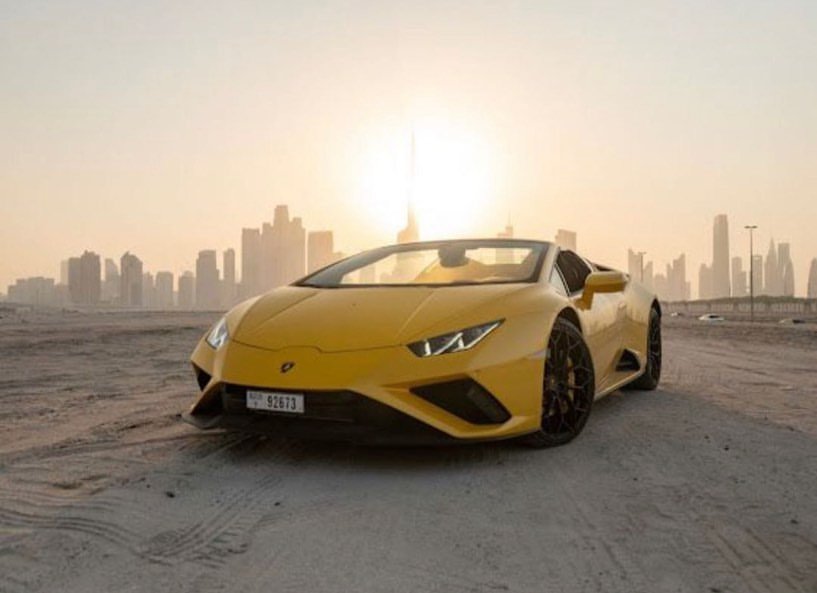Introduction
The quest to identify the best car in the world is a topic that has fueled countless debates among automotive enthusiasts, experts, and casual drivers alike. This ongoing discussion highlights that the notion of the “best” car is inherently subjective, shaped by a myriad of factors that cater to diverse preferences and needs. When delving into this expansive topic, one must consider a multitude of perspectives, each offering unique insights that may align differently with individual priorities.
Factors such as performance and design often stand at the forefront of these evaluations. The power, speed, and handling capabilities of a car are compelling metrics for those who seek thrilling driving experiences. Design, both in terms of aesthetics and ergonomics, plays a crucial role as well, merging form with function to create vehicles that are not only visually captivating but also comfortable and practical.
Sustainability has emerged as a pivotal criterion in recent years, with an increasing emphasis on environmentally friendly technologies. Hybrid and electric vehicles, for example, represent a paradigm shift towards greener alternatives, reflecting broader societal transformations aimed at preserving natural resources and minimizing environmental impact. The focus on sustainability signifies a growing awareness and responsibility towards our planet, influencing how we define automotive excellence.
Additionally, user satisfaction is a cornerstone in determining the best car. Features such as safety, reliability, and in-car technology can significantly enhance the driving experience, making a car more appealing to a broader audience. Drivers’ personal experiences, including ease of maintenance and cost of ownership, contribute to a holistic view of what makes a car truly outstanding.
By evaluating automobiles through these varied lenses, it becomes apparent that the “best” car is not a one-size-fits-all designation. Rather, it is an amalgamation of individual priorities, each weighting different aspects to shape their ideal vehicular masterpiece.
Performance Metrics
When evaluating what constitutes the best car in the world, performance metrics stand as a central pillar. Among these metrics, horsepower and torque are often the most scrutinized. Horsepower, a measure of the engine’s output, significantly influences a car’s speed and acceleration. For instance, the Bugatti Chiron boasts an astonishing 1,479 horsepower, allowing it to reach top speeds of up to 304 mph. Torque, on the other hand, impacts the car’s ability to perform under varying conditions. The Tesla Model S Plaid, for example, offers 1,020 lb-ft of torque, translating to electrifying acceleration of 0-60 mph in just under two seconds.
Acceleration and top speed are additional critical aspects that spotlight a car’s performance. Ferrari’s SF90 Stradale is a prime example, with an impressive 0-60 mph figure of 2.5 seconds and a top speed of 211 mph. However, acceleration isn’t the sole factor; handling and braking capabilities are equally vital. Excellent handling ensures that the car can maneuver effortlessly through turns and maintains stability under high speeds. Lamborghini’s Aventador SVJ excels here, featuring an advanced all-wheel-drive system and aerodynamics that contribute to its remarkable agility.
Braking capabilities are indispensable for safety and performance. A car with high-speed potential must also have advanced braking systems to match. The Porsche 911 GT2 RS employs carbon-ceramic brakes, facilitating short stopping distances and enhancing overall safety.
In summary, the best car in the world amalgamates exceptional horsepower and torque, rapid acceleration, stellar handling, and robust braking capabilities. Examples like the Bugatti Chiron, Tesla Model S Plaid, Ferrari SF90 Stradale, and Lamborghini Aventador SVJ embody these performance metrics, establishing them as leaders in the automotive world. Such metrics combine to define not just a high-performing vehicle but one that excels across various automotive dimensions.
Innovative Technology
In the rapidly evolving automotive world, the integration of cutting-edge technology is a crucial determinant in distinguishing the best car in the world. Modern vehicles are becoming hubs of innovation, with advancements that enhance safety, comfort, and the overall driving experience. Three exemplars of automotive technological brilliance are the Tesla Model S, BMW i8, and Audi A8, each of which stands out for its distinctive tech-forward features.
The Tesla Model S is often hailed for its groundbreaking autonomous driving technology. Tesla’s Autopilot system leverages a sophisticated suite of sensors, cameras, and radar to offer semi-autonomous capabilities that include lane keeping, adaptive cruise control, and self-parking. Furthermore, the Model S boasts over-the-air software updates, ensuring that owners consistently benefit from Tesla’s latest technological advancements without needing to visit a dealership.
The BMW i8, on the other hand, represents an ingenious fusion of performance and eco-friendly technology. Its plug-in hybrid powertrain is coupled with advanced aerodynamics and lightweight carbon fiber construction, promoting both efficiency and agility. The i8 is equipped with BMW’s iDrive infotainment system, which intuitively integrates navigation, connectivity, and various driver assistance systems, making it a paragon of modern automotive engineering.
Similarly, the Audi A8 is lauded for its LIDAR-based Level 3 autonomous driving technology, which can entirely take over driving duties in certain conditions. Audi’s flagship sedan also features a high-resolution Virtual Cockpit display, seamlessly merging digital gauges with infotainment readouts for a futuristic drive. Additionally, its adaptive cruise assist and predictive active suspension systems augment driver safety and ride comfort, epitomizing luxury and innovation.
The relentless pursuit of innovative technology by automakers like Tesla, BMW, and Audi underscores the importance of cutting-edge features in evaluating the best car in the world. Autonomous driving capabilities, advanced infotainment systems, and state-of-the-art safety measures not only enhance the user experience but also push the boundaries of what modern vehicles can achieve.
“`html
Design and Aesthetics
When considering what constitutes the best car in the world, design and aesthetics play a crucial role. The exterior design is often the first aspect that catches the eye, marrying functionality with visual appeal. Take, for instance, the Aston Martin DB11, a paragon of sleek elegance. Its aerodynamic lines and sculptural form not only contribute to its performance but also make it a work of art on wheels. Similarly, the Rolls-Royce Phantom stands as a monumental example of opulence, with its imposing grille and meticulous handcraftsmanship reflecting a timeless aesthetic.
The interior luxury of a vehicle is equally as important, if not more so, in defining its overall design excellence. The Rolls-Royce Phantom again demonstrates superior craftsmanship with its bespoke interior options, including hand-stitched leather and customizable wood veneers. This attention to detail creates a sanctuary of comfort and exclusivity. Meanwhile, the Mercedes-Benz S-Class serves as a benchmark in modern luxury with its state-of-the-art infotainment systems, ambient lighting, and superior ergonomics. The cabin design prioritizes both aesthetic beauty and practical comfort, ensuring every journey is both pleasurable and efficient.
Overall visual appeal is a synthesis of these elements – exterior allure, interior sophistication, and innovative design features. The Aston Martin DB11, Rolls-Royce Phantom, and Mercedes-Benz S-Class demonstrate that exceptional aesthetics are not just about looking good; they are about creating a holistic experience that resonates on emotional and sensory levels. Each of these cars exudes a distinct personality while adhering to high standards of design excellence, making them stand out in the competitive automotive market.
“““html
Cost and Value
When determining the best car in the world, the cost-to-value ratio is a pivotal metric. This ratio not only encompasses the purchase price but also evaluates the features, performance, and reliability that a vehicle offers in return for the investment. The automotive market showcases a diverse range of price points and quality levels, making it essential to discern which cars provide the most value for their cost.
Among the vehicles that stand out in the affordable yet high-quality segment is the Toyota Camry. Known for its reliability, fuel efficiency, and safety features, the Camry has consistently been a favored choice among consumers seeking a balanced combination of cost and value. Its moderate pricing offers substantial returns in terms of longevity and lower maintenance costs, providing an excellent cost-benefit ratio for families and commuters.
In the realm of luxury vehicles, the BMW 3 Series and the Lexus LS present compelling cases for their higher price points. The BMW 3 Series is renowned for its dynamic driving experience, advanced technology, and premium interior finishing. While it commands a higher price, the driving performance and brand prestige often justify the investment for many buyers. Similarly, the Lexus LS is celebrated for its opulent craftsmanship, state-of-the-art safety systems, and unparalleled comfort. This luxury sedan, though more expensive, delivers an exceptional ownership experience that includes high resale value and superb customer service from the brand.
Comparing these models showcases the intrinsic differences in cost-to-value ratios across different market segments. While the Lexus LS and BMW 3 Series cater to buyers prioritizing luxury and performance, the Toyota Camry appeals to those focused on practicality and long-term reliability. Ultimately, the best car from a cost-to-value perspective hinges on individual preferences and priorities, whether it be comfort, performance, practicality, or a blend of these aspects.
“`
Sustainability and Environmental Impact
As concerns about climate change and environmental degradation continue to rise, the automobile industry has been compelled to rethink traditional vehicle designs. Today, sustainability and environmental impact have become pivotal factors in determining the best car in the world. Key areas of focus include fuel efficiency, emissions, the use of sustainable materials, and the adoption of electric or hybrid technologies.
One leading example in this domain is the Tesla Model 3. Renowned for its zero-emission electric powertrain, this vehicle eliminates the environmental harm caused by conventional gasoline engines. The Tesla Model 3 not only offers significant reductions in greenhouse gas emissions but also features advanced battery technology that promotes efficient energy use. Additionally, Tesla’s emphasis on renewable energy sources for charging stations further bolsters its environmental credentials.
The Toyota Prius, a pioneer in the hybrid vehicle market, is another notable mention. Combining a gasoline engine with an electric motor, the Prius delivers substantial fuel efficiency and lower emissions. The vehicle’s regenerative braking system captures energy that would otherwise be lost, repurposing it to power the electric motor, thus maximizing efficiency. Moreover, Toyota’s commitment to using recycled materials in the Prius underscores the brand’s dedication to sustainability.
Lastly, the Hyundai Kona Electric has emerged as a competitive player in the realm of sustainable vehicles. As a fully electric compact SUV, it provides a pollution-free driving experience while offering impressive range capabilities. Hyundai reinforces its sustainable approach by incorporating eco-friendly materials in the vehicle’s construction and ensuring efficient energy use through advanced battery management systems.
In summary, vehicles like the Tesla Model 3, Toyota Prius, and Hyundai Kona Electric exemplify how the automotive industry is advancing towards more environmentally friendly solutions. As technology evolves, the emphasis on sustainability and reducing environmental impact will only grow, inevitably shaping the future landscape of automobile excellence.
User Reviews and Satisfaction
When determining the best car in the world, user reviews and satisfaction rates offer invaluable insights. Analyzing extensive data from customer feedback and satisfaction surveys helps reveal which models deliver the most joy and reliability to their owners.
The Honda Accord continues to be a favorite among many drivers. Recognized both for its reliability and comfort, the Accord consistently receives praises for its fuel efficiency, spacious interior, and advanced safety features. Users frequently highlight the car’s smooth handling and impressive durability, making it a long-term investment for families and individuals alike.
Meanwhile, the Subaru Outback garners admiration for being a versatile, all-weather vehicle. Owners often commend its excellent all-wheel-drive system, making it a top choice for those who frequently drive in varying road conditions. The Outback’s balance of ruggedness and modern comforts, including a well-designed infotainment system and generous cargo space, adds to its widespread appeal.
For sports car enthusiasts, the Porsche 911 stands out as an iconic vehicle known for delivering exhilarating driving experiences. Reviews often mention its superior handling, powerful engine performance, and timeless design. Porsche 911 owners express a high level of satisfaction, attributing their loyalty to the brand’s commitment to precision engineering and luxury. This car effectively combines speed, control, and a classy aesthetic, making it a cherished choice among luxury sports car aficionados.
Overall, the models like the Honda Accord, Subaru Outback, and Porsche 911 show varying strengths that cater to different user preferences. The consistent positive feedback these vehicles receive underscores their status as some of the most loved and dependable cars on the market.
Supercar rental Dubai
The quest to determine the best car in the world is inherently subjective and deeply personal, influenced by a myriad of factors that vary from one individual to another. Throughout this discussion, we have explored different perspectives highlighting key attributes such as performance, safety, luxury, and technological innovation. Each of these aspects holds varying degrees of importance depending on the user’s specific needs and aspirations.
It’s evident that what may be the ideal vehicle for one person may not necessarily align with another’s preferences. For instance, a car enthusiast might prioritize advanced engineering and top-notch performance, while a family might focus more on safety features and space. Similarly, tech aficionados might look for the latest in intelligent systems and connectivity, whereas luxury seekers might indulge in plush interiors and exquisite craftsmanship.
The diverse array of choices available in the automotive market today ensures that there is a vehicle to cater to almost every conceivable need. Evaluating what constitutes the best car thus comes down to individual priorities and lifestyle. For some, eco-friendliness and fuel efficiency might be paramount, with electric and hybrid vehicles taking precedence. Others might lean towards timeless classics, placing a premium on historical significance and unique driving experiences.
In closing, the decision about the best car in the world resides within each person’s unique perspective. When determining the optimal vehicle for your needs, it’s crucial to weigh what features matter most to you, be it innovation, comfort, performance, or sustainability. Delving into personal preferences and priorities will ultimately guide you towards the right choice. The best car in the world is, after all, the one that meets and exceeds your individual expectations and requirements, making each journey a truly satisfying experience.







